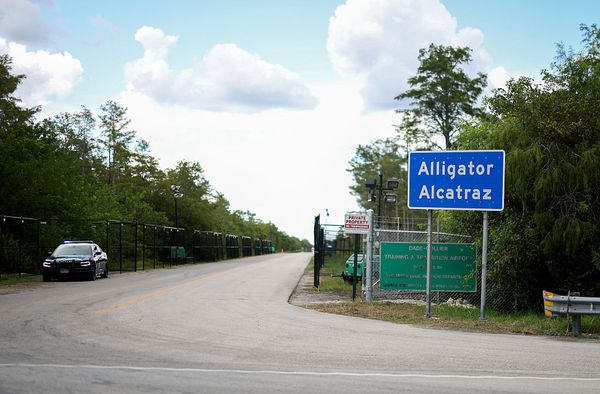
Have you ever encountered one of the biggest horse breeds? Many of these tall, broad equines are draft horses. Due to their history, which is mostly rooted in working the land, you don’t see as many of them as you would have 100 or more years ago. Thanks to the efforts of numerous breed societies worldwide, many of these historic draft horses are still bred today, representing a tangible link to our past.
As well as being the heaviest and biggest horse breeds, draft horses are muscular, strong and built for pulling. Some are smaller and denser, others leggier and more athletic-looking, but one thing that unifies draft horses is their hardiness and willingness to work. Placid yet obedient, draft horses like the ones we’ll look at in this article were the ideal working partner in a world before machines.
That’s not to say they don’t make wonderful companions today, and many draft breeds can be seen as the beloved partners of leisure riders, heritage crafters and industry enthusiasts and traditionalists alike. Let’s take a look at the 10 biggest of these wonderful breeds.
Biggest horse breeds in the world
10. Comtois
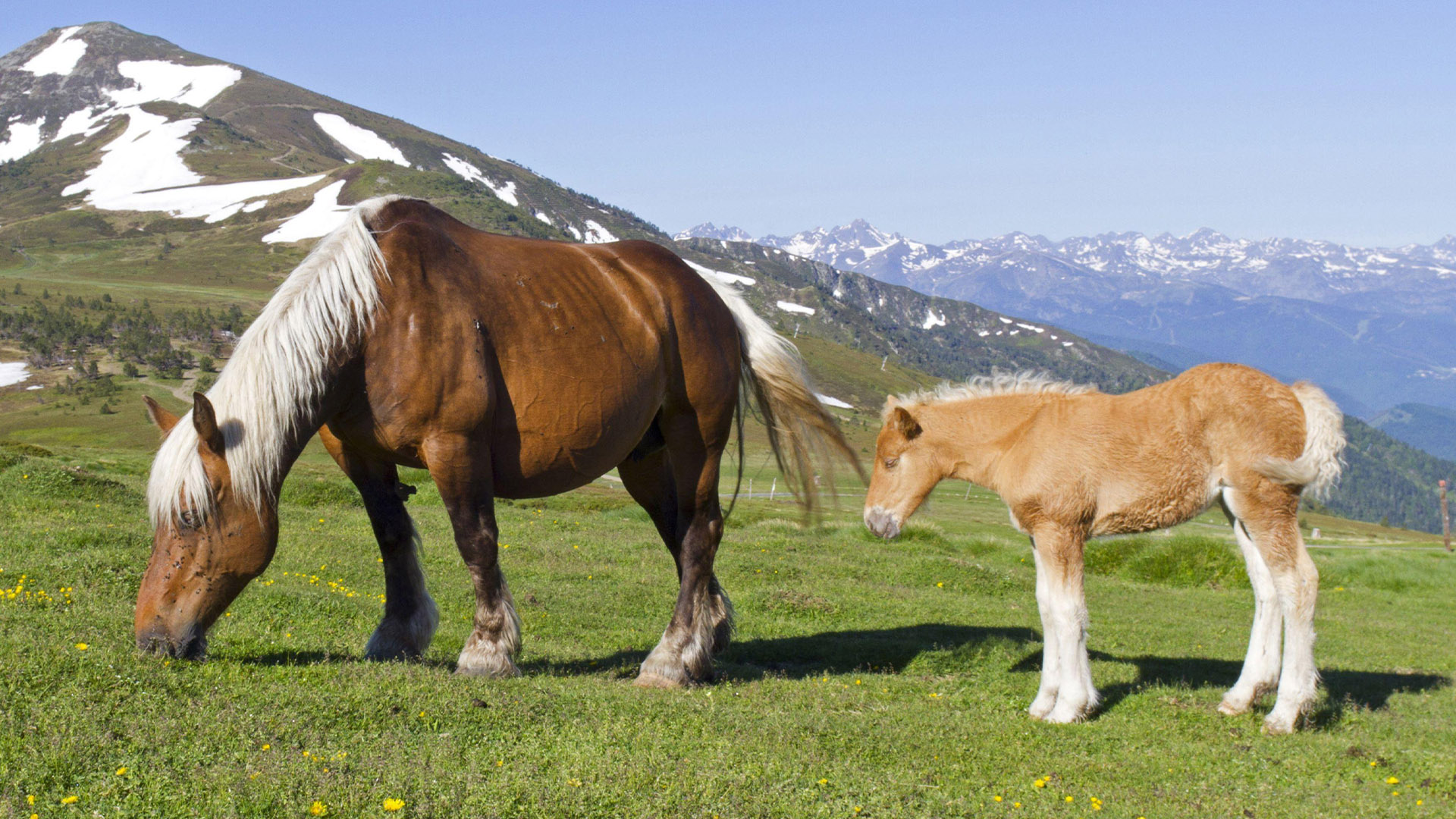
Height: 14.3–16.1hh
Weight: 1,400–1,700 pounds
Common colors: Bay, chestnut or chestnut with flaxen mane and tail
Country of origin: France/Switzerland
Hailing from the Jura Mountains on the French/Swiss border, the Comtois was once a prized cavalry and military horse. It’s said Louis XIV used these magnificent beasts in his armies, as did Napoleon when he invaded Russia.
Today, the Comtois is one of France’s most popular heavy horse breeds. They are still widely used in logging and farming work, especially in places where the land cannot be worked by machines. Comtois also make for great leisure horses, as well as being used for draft work.
9. Dutch Draft
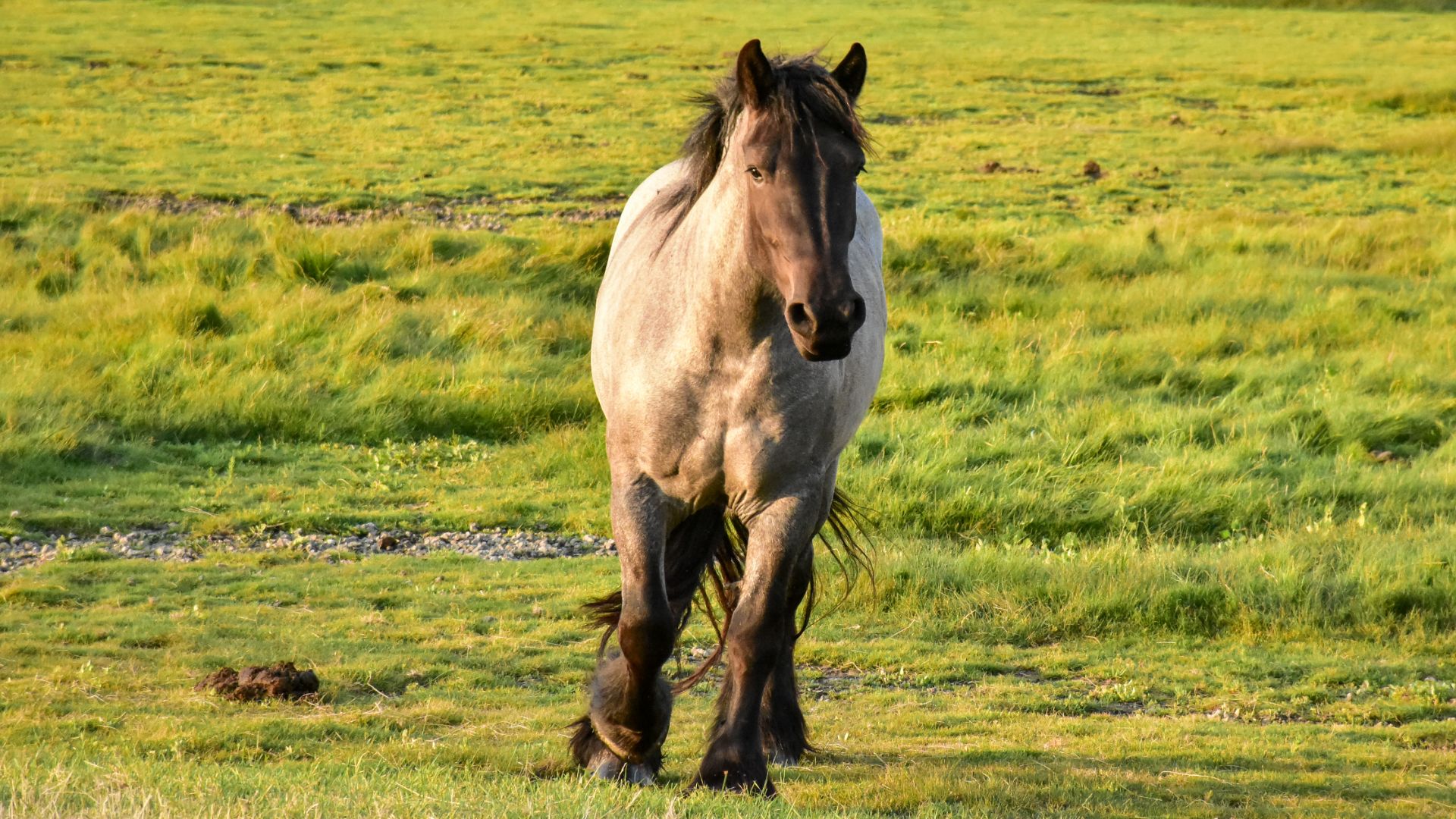
Height: 15–17hh
Weight: 1,500–1,700 pounds
Common colors: Bay, gray, chestnut or roan
Country of origin: Netherlands
This sturdy, broad-chested horse was built to pull heavy loads. This breed closely resembles the Belgian Draft and was once abundant in the coastal Zeeland region of the Netherlands. Here, the heavy marine clay makes farm work a tough task, so this equine powerhouse is the perfect solution.
The Dutch Draft is still a working horse today, albeit on a much smaller scale. They are used in heritage work, harness competitions and sometimes for leisure riding.
8. Jutland
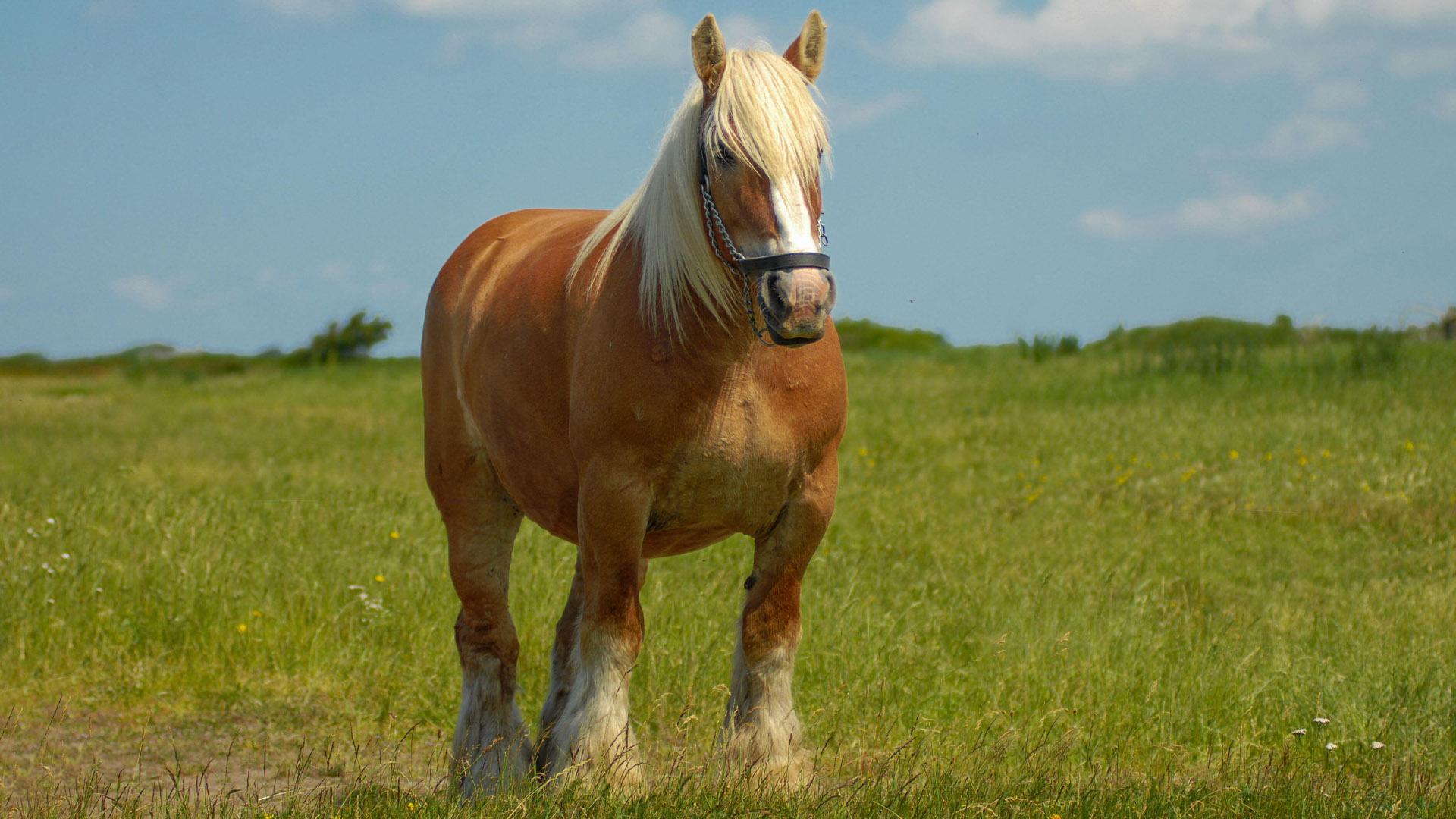
Height: 15.1–16.1hh
Weight: 1,400–1,800 pounds
Common colors: chestnut or chestnut with flaxen mane and tail
Country of origin: Denmark
This compact and muscular horse originates from the Jutland peninsula in eastern Denmark. Although the breed’s ancestors were bred here from the Middle Ages, the breed as we know it today was refined from the middle of the 19th century.
The Jutland is closely linked to the Carlsberg brewery, which used the breed to haul brewery wagons in the 20th century. Today, the Jutland can still be found pulling Carlsberg wagons in Copenhagen, and can also be seen at shows, promoting the beer and the Jutland itself.
7. American Cream Draft
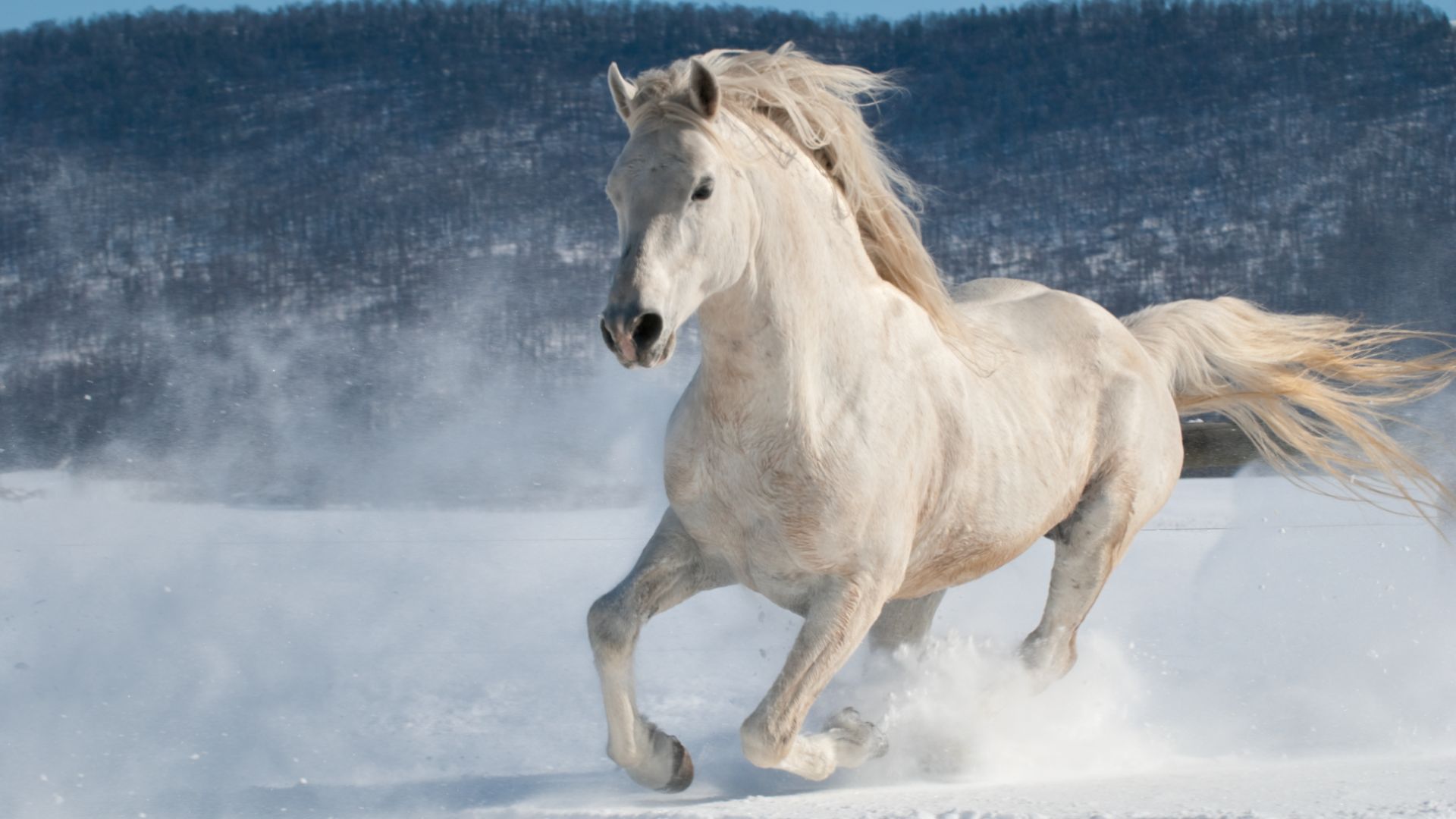
Height: 15–16.3hh
Weight: 1,600–1,800 pounds
Common colors: cream, also called “gold champagne”
Country of origin: USA
The first known American Cream was called ‘Old Granny’; she appeared at a farm sale in Story County, Iowa, in 1911. A vet named Eric Christian, arrested by the beauty of her foals, persuaded Nelson Bros of Jewell, Iowa, to keep a colt for a breeding stallion. Over time, a new breed of cream-colored all-American draft horses was cultivated in Iowa.
The breed is endangered today, but is desirable for harnessing, hitching and driving.
6. Suffolk Horse
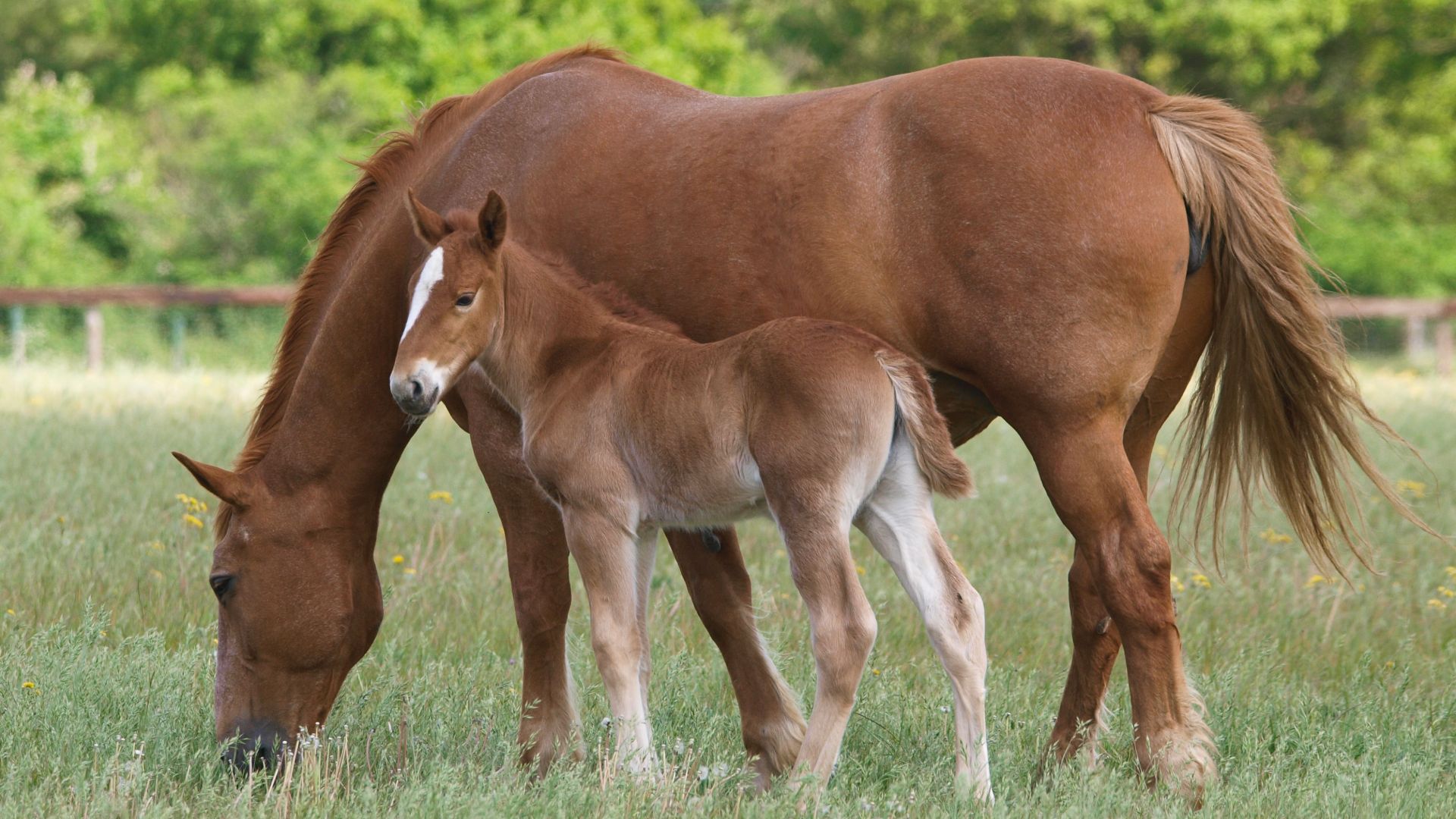
Height: 15.3–17hh
Weight: 1,600–2,000 pounds
Common colors: Chestnut, traditionally spelt 'chesnut'
Country of origin: England
The Suffolk Horse, also known as the Suffolk Punch, is the rarest draft horse in the UK. They played a vital role in shaping the country’s agricultural and military history as they worked the flat, fertile farmland of the East Anglia region and many Suffolks were bred in the early to mid-19th century to meet the demand for farm work.
Their numbers were further depleted as they were used to haul artillery guns during World War One, and as the 20th century advanced, mechanized farming further halted breeding efforts. The Suffolk remains rare to this day, but there are a number of breeding initiatives promoting population growth. They can be seen at agricultural and country shows, and they are increasingly used in ridden work.
5. Clydesdale
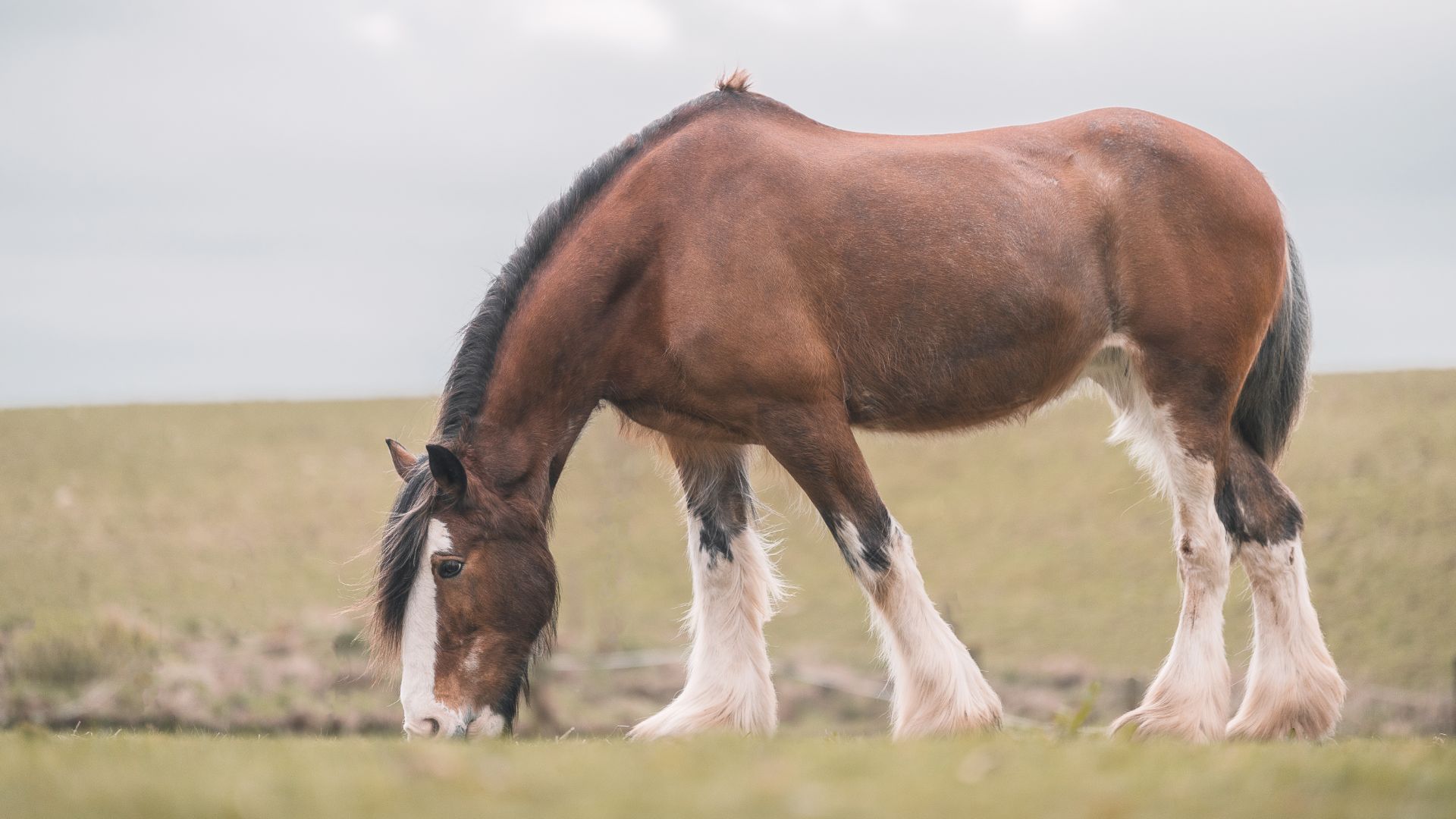
Height: 16–18hh
Weight: 1,800–2,000 pounds
Common colors: Bay, brown, black, roan
Country of origin: Scotland
The iconic Clydesdale, recognisable for its flowing white feathers, is closely associated with Budweiser. Beer wagons pulled by teams of Clydesdale geldings to advertise and promote Budweiser’s product, and Americans will recognise the Budweiser Clydesdale advert as a long-standing Super Bowl tradition.
In their native Scotland, Clydesdales were another firm fixture on farms from the early 18th century. They were also involved in logging and driving. They are still used for heritage draft work, and they are also kept as ridden and show horses.
4. Ardennais
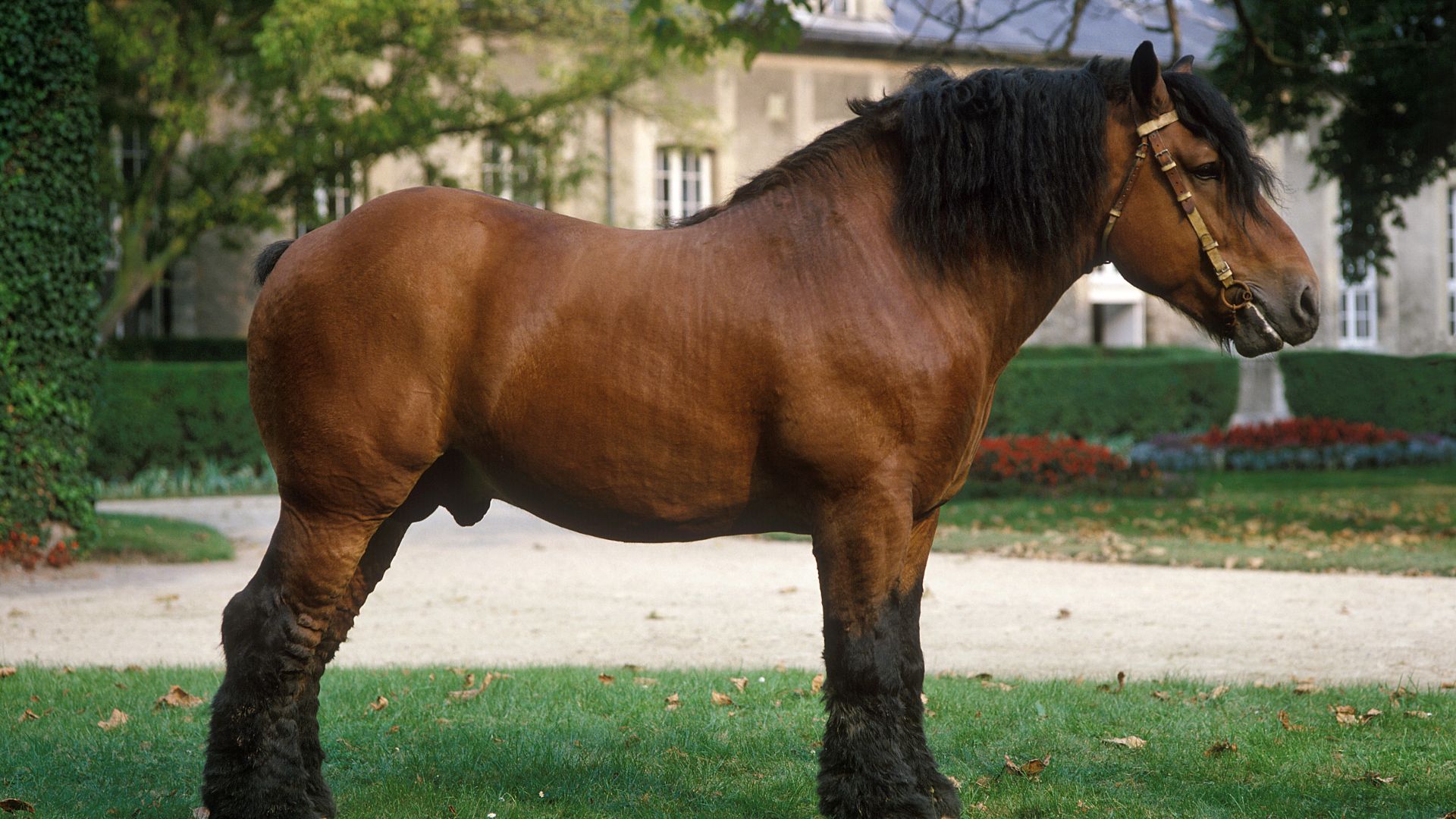
Height: 15.3–16.3hh
Weight: 1,500–2,200 pounds
Common colors: Bay, chestnut, roan or palomino
Country of origin: Belgium, Luxembourg and France
Although not one of the biggest horse breeds by height, the Ardennais, or Ardennes, has an impressive amount of heft. These draft horses originate from Ardennes, a region spanning Belgium, Luxembourg and France, and are one of the oldest horse breeds, speculated to be descended from ancient horses and used by Roman legions and medieval knights for jousting and warring.
Super strong and willing, these draft horses are famed for their pulling power and bravery in battle. Today, they are still used in driving and riding, and can also be found at equine therapy centres.
3. Belgian Draft
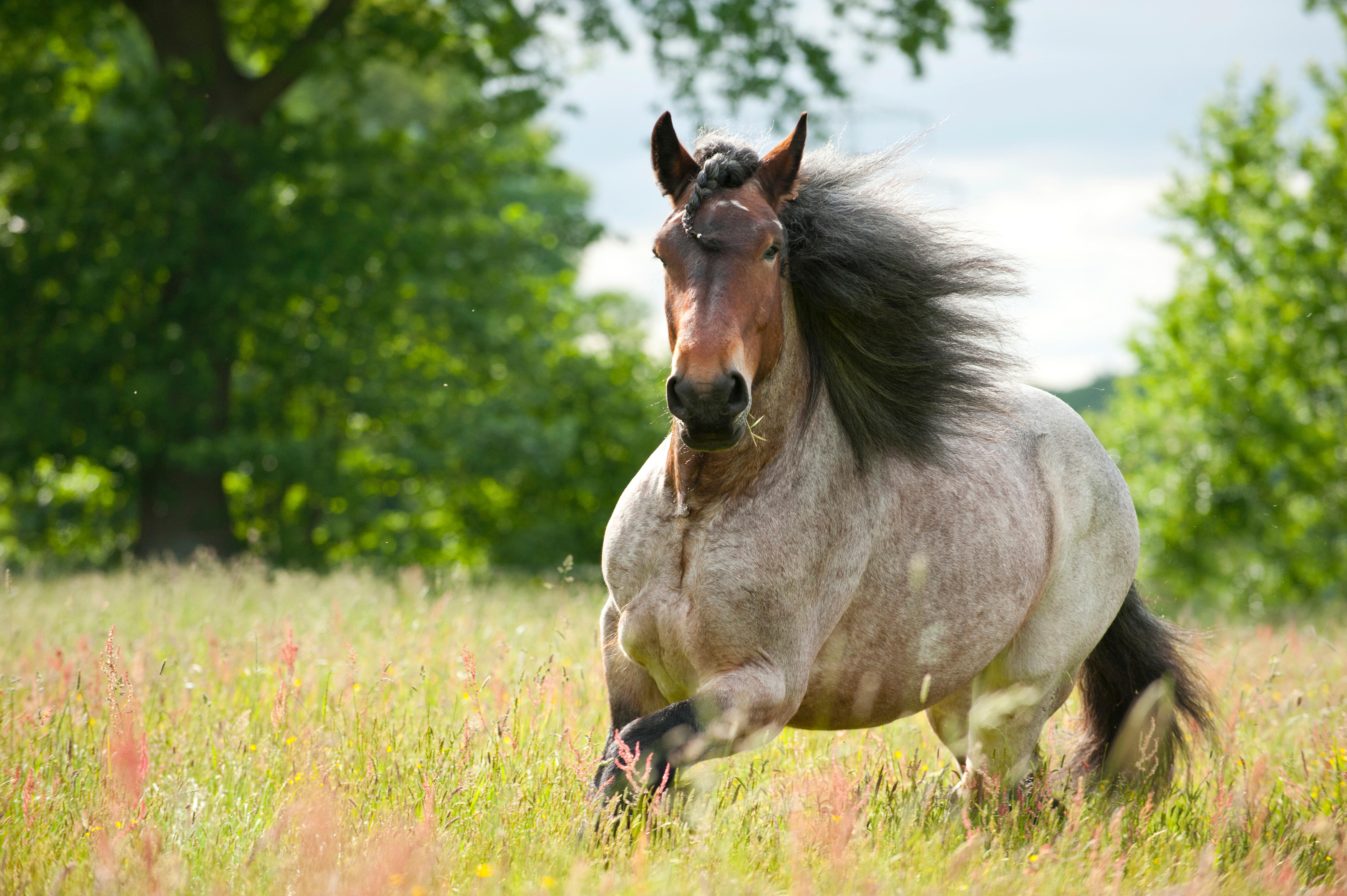
Height: 15–18hh
Weight: 1,800–2,200 pounds
Common colors: Usually roan; bay, blue or strawberry
Country of origin: Belgium
Like the Ardennes, the Belgian Draft was popular for its strength and stoicism both in agricultural and military settings. Though the demand for draft horses declined as the world became increasingly mechanized, the breed was beloved and protected from going extinct.
Belgians today undertake heritage agricultural and driving work, but are also brilliant leisure horses across ridden and driving work.
2. Percheron
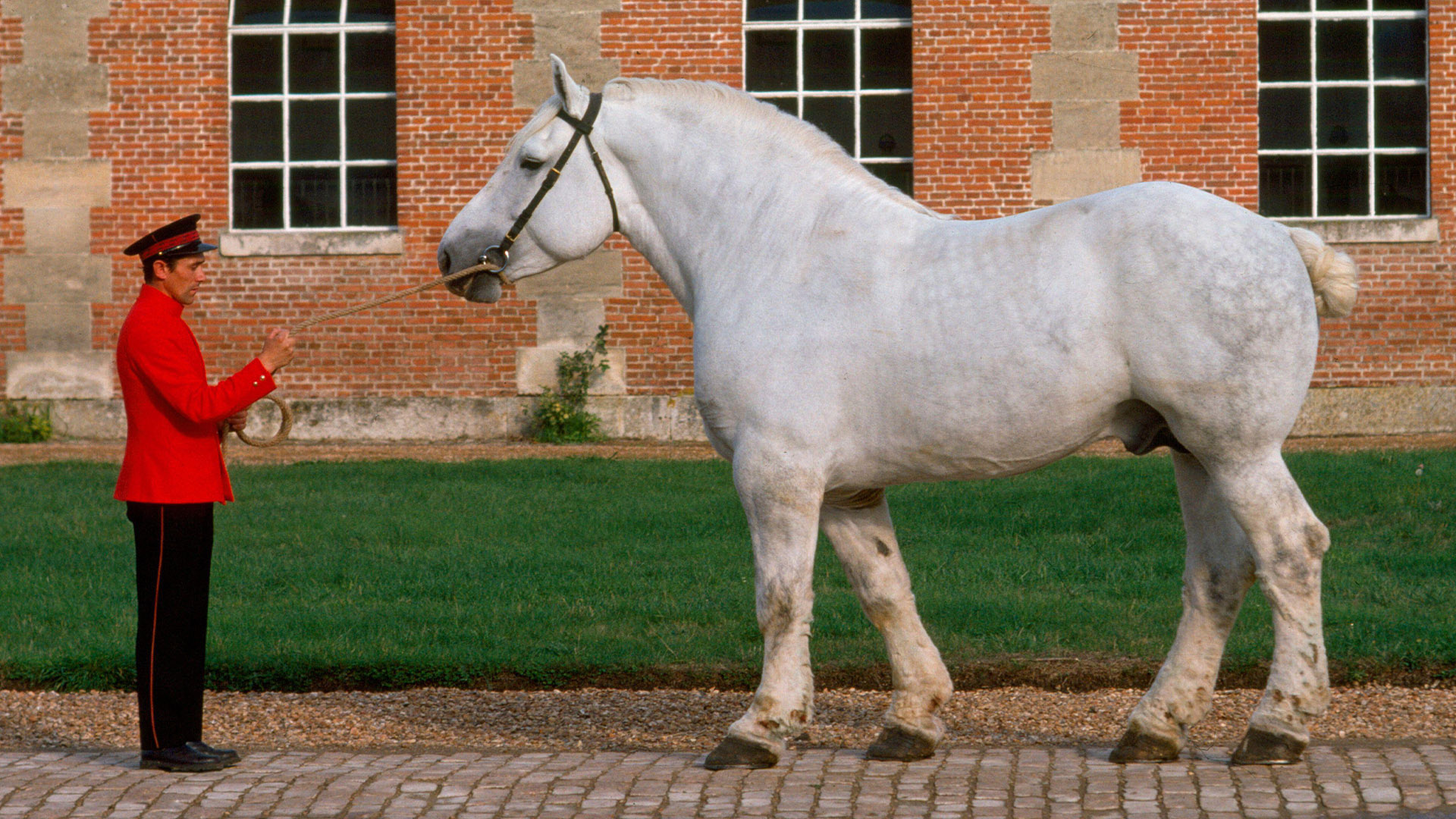
Height: 15–19hh
Weight: 1,900–2,00 pounds
Common colors: gray, black
Country of origin: France
There is some speculation about the Percheron’s origins, but records from the 8th century link early Percherons to Normandy, France. Today’s Percheron can be grouped into three types: the smaller French Percheron, the taller North American Percheron and the British Percheron in between.
Resilient and hard-working, the Percheron’s working history has spanned the centuries as a loyal cavalry charger, a means of artillery haulage, a stagecoach puller and a farm workhorse. It remains a popular draft horse breed for leisure and show use.
1. Shire
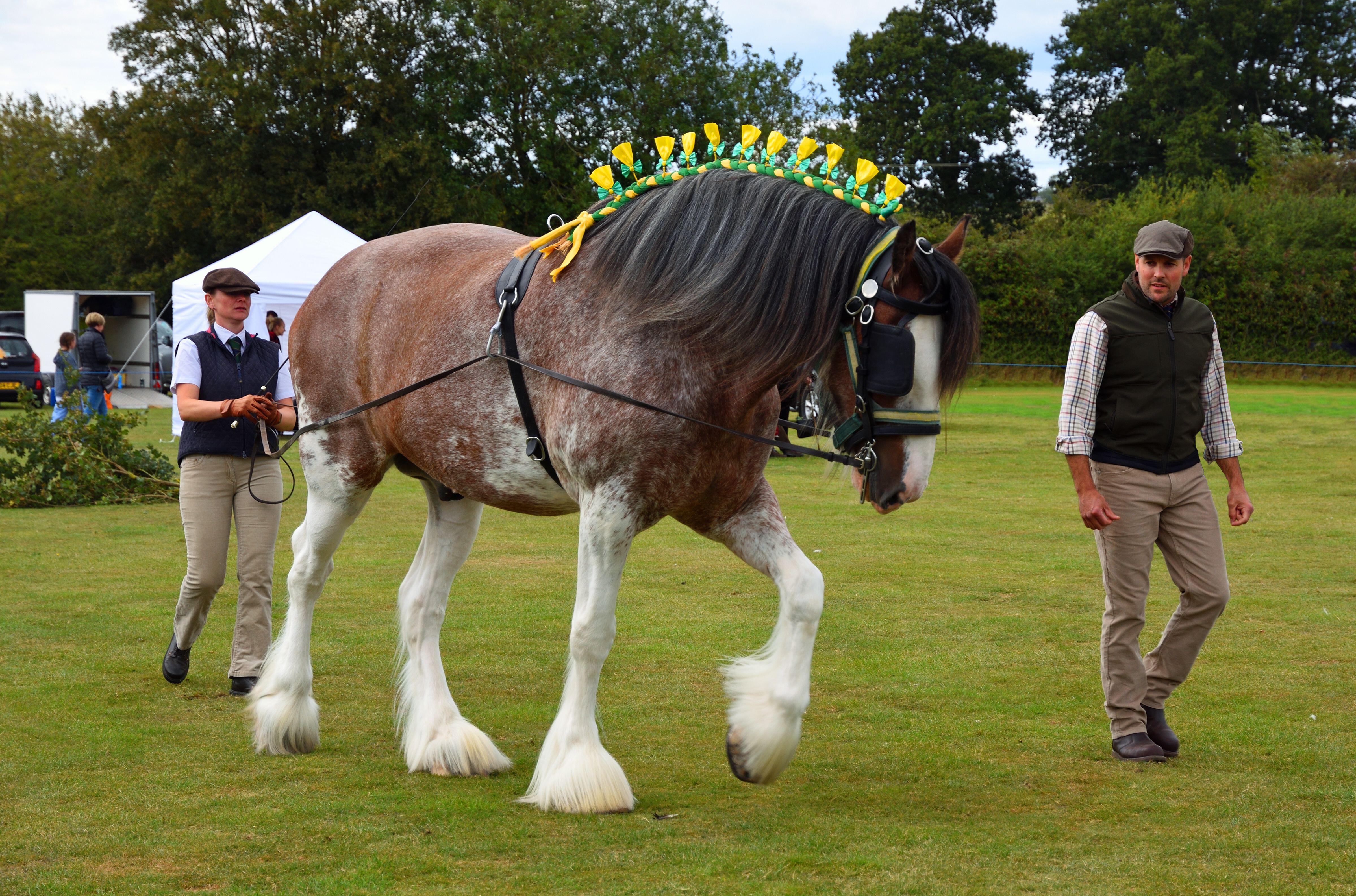
Height: 17–19hh
Weight: 1,800–2,400 pounds
Common colors: black, bay, brown, gray
Country of origin: England
The Shire horse takes the number one spot in our list of biggest horse breeds. Their breeding has been honed over centuries from its fenland ancestor, the Lincolnshire Black, and crossed with Flemish horses to produce the tall, strapping draft horse we know today.
With a tremendous capacity for pulling, the Shire has been employed in various domestic and commercial tasks over the centuries, from carrying knights to pulling barges along canals and for arable work and transport. They’re also used for leisure activities such as trekking, and they are shown in hand, under saddle and can be seen competing in ploughing matches.
How tall was the biggest horse ever?
According to Guinness World Records, the tallest horse ever documented was a Shire horse called Sampson. He foaled in 1846 in Bedfordshire, England, and reached a height of 21.2hh, or almost 87 inches to the wither.
Read next: American horse breeds
Edited by Georgia Guerin.





